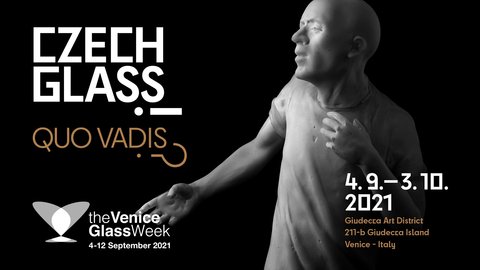
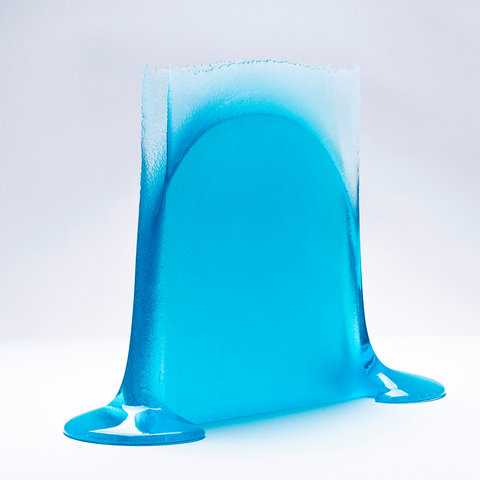
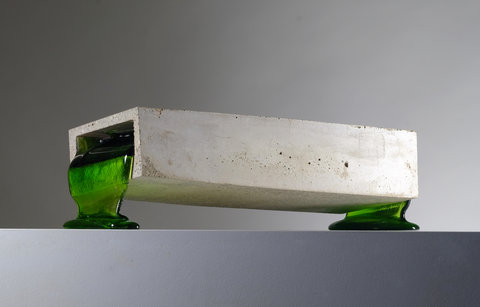
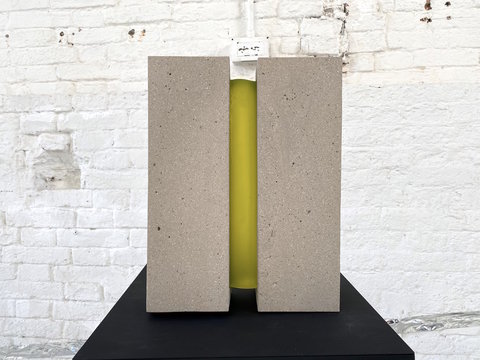
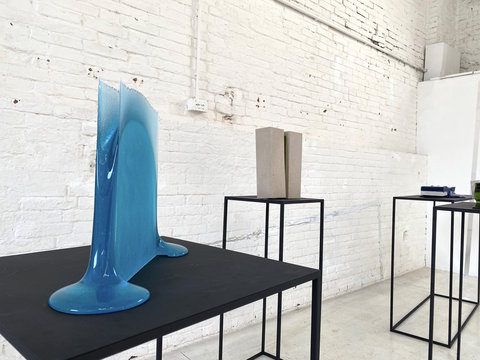
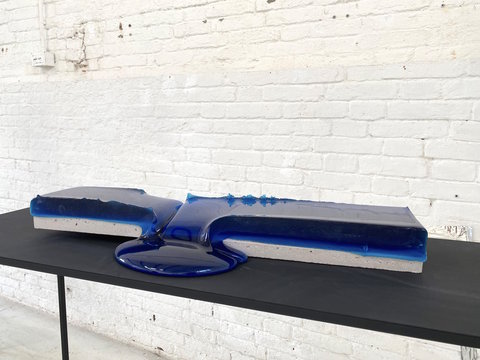
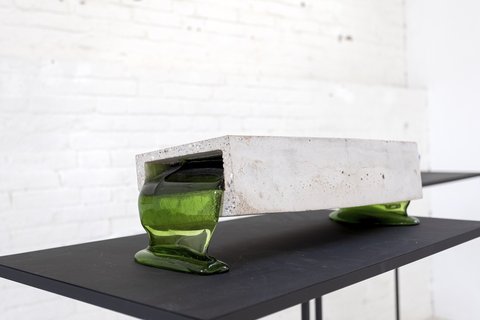
Luba Bakičová
She graduated from the Secondary Vocational School of Glass in Lednické Rovné in Slovakia and then at the Faculty of Art and Design of the Jan Evangelista Purkyně University in Ústí nad Labem at the Glass Studio under the leadership of associate professor Ilja Bílek. She currently works here as an assistant professor. She has participated in several exhibitions in the Czech Republic, but more of her work has been presented abroad, specifically in Denmark, Sweden, the United Kingdom and Germany. Her works can be found in the collections of the Glasmuseum Lette - Alter Hof Herding in Coesfeld, Germany, as well as in the Danish Glasmuseet Ebeltoft, in the East Bohemian Gallery in Pardubice and in private collections.
Already during her studies, she took the path of actively searching for her own style. She was not happy with a well-established way how glass was viewed nor with proven techniques and procedures. What was challenging for her was the search of hitherto undiscovered possibilities of expression of glass material and the performance various experiments aimed at revealing its hidden properties. She was fascinated by the very process of creation of her work, by examining the physical changes that occur during the processing of glass. Empirically, she found out how this magical material changes, disintegrates, falls apart and acquires new shapes, forms and properties.
This was followed by another challenge - testing the behaviour of glass in combination with another material. She decided to focus on the connection of two materials with completely different physical properties - refractory concrete and brittle glass. The concrete segments blend together into a solid shape because of the heat and form a supporting structure from which the glass comes out. At some point, the melting ends and the flowing mass solidifies. With more professional experience, this moment is much more the result of an author-driven process than a coincidence. Bakičová thus raises the glass from the passive mass to the level of the active medium - it changes from a material that is subordinated in shape and weight to a material that takes over the supporting and, in fact, key function. The laws of physics and the presumed behaviour of the materials used are thus "all mixed up", the brittle outflowing mass emotionally carries the weight of the concrete, which seems to float lightly over it. In this way, Bakičová gradually created a number of objects and for the Czech Glass, Quo Vadis?! project she chose five of them.
Two works from the collection bear the name Yes name, which was created as a free designation, as the author deliberately decided not to use any verbal identification of the object. As she says: " I believe that the moment I assign a specific title to a work, I will limit the field open to the viewer's individual interpretation, and basically I will make it impossible or at least difficult for him to follow his own shades of ideas, experiences and experiences. In this way, although the work is given a name, but it is not expressed by the words, it remains 'only energy'. It is the energy that helps to turn thoughts into matter before the origin of everything, and then to turn matter into thoughts. ”
Another exhibited work is a pure glass sculpture of the Azure Way. It is a kind of "story record" of a planned and controlled process. The final form of the object was created in two different phases. In the first phase if was melted in an open mould and grinded and as a result it acquired a smooth and linearly perfect shaped base. "However, the creative scenario does not end here and the object enters the next phase, in which there are no moulds and the object changes its absolute linearity and is completely subject to the laws of physics under the influence of high temperature. The object is exposed to this influence until the point when the real visual form of the object meets my visualisation. The object itself is then the only authentic proof of the whole storyline. It contains many clues from which the course of the past process can be reconstructed."


